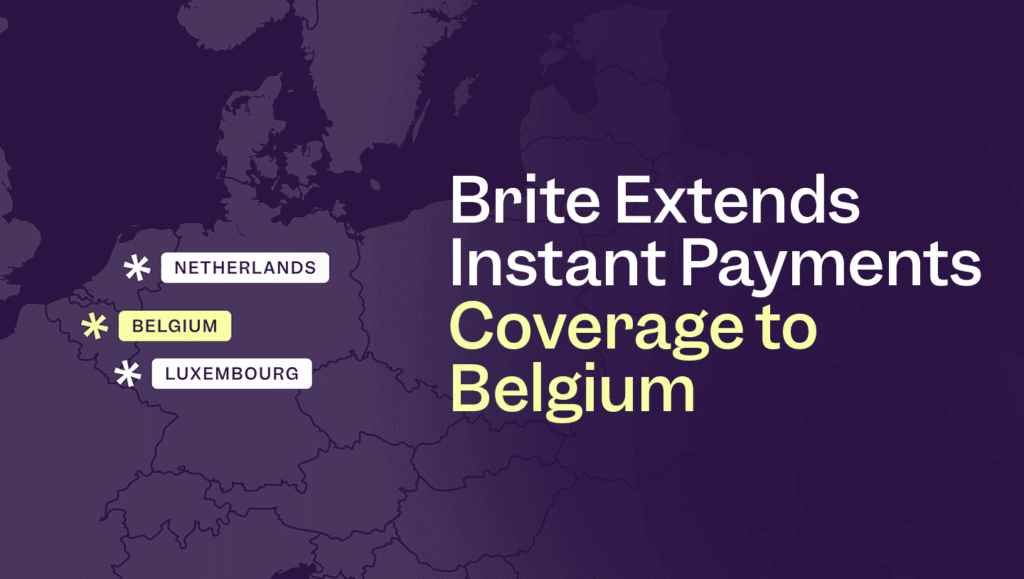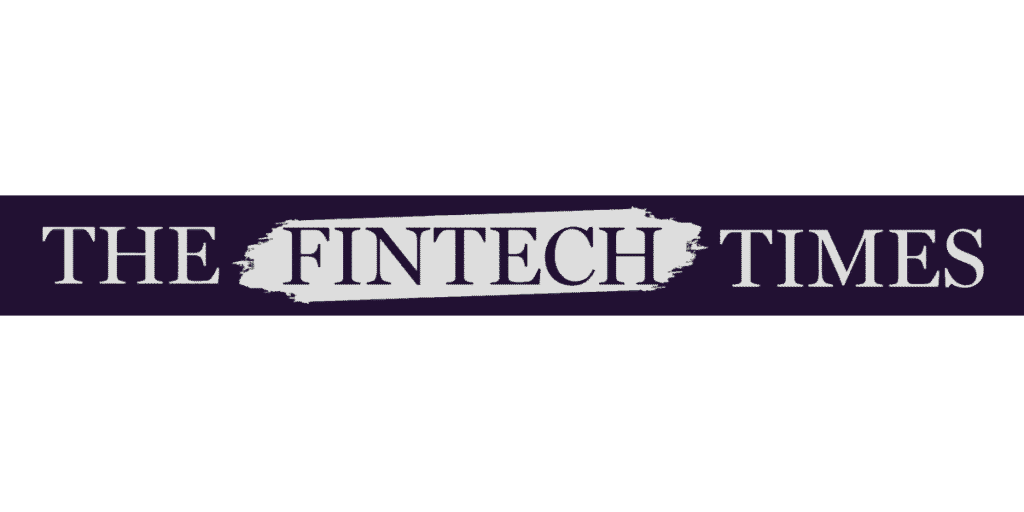How to Improve Your Ticketing Services Using Instant Payments

Interested in how instant payments can improve your event ticketing services platform? Consumer spending is set to rise over the next 12 months, signalling healthy growth in the events industry. However, venues and event ticketing platforms also see shifts in consumer preferences and attendance styles, so the time to innovate has never been better. Instant payments technology can transform your customer experience for the better and drive growth across your business. Yet, finding the right partner and actually implementing instant payment solutions can be challenging. That’s why, in this article, we’re looking at how you can improve your ticketing services and get started with instant payments. Read on to learn more about building next-generation digital ticketing solutions and how they can benefit your hospitality and events business. How instant payments can add value to the events industry There’s plentiful competition in today’s events industry. Online and hybrid events have redefined the experience economy and created new opportunities. So, every part of your ticketing platform must be optimised to engage, attract and convert customers. Here, instant payments offer a range of benefits to both drive sales and streamline the purchasing process. Faster payment methods can enhance the customer experience by allowing consumers to complete purchases without unnecessary friction that impacts merchants’ conversion rates. For example, lengthy processing times can quickly drive up cart abandonment rates. Research shows that sites loading in as little as one second convert three times more customers than sites loading in five or more seconds. Similarly, payment declines from data entry errors are almost as common as those from insufficient funds. Instant payments also reduce fraud by removing the risk of fraudulent chargebacks. By leveraging customer bank account details directly, you can assess transaction affordability ahead of time. Combined, you can gain a competitive advantage by building a reputation as the go-to platform for this season’s hottest events. It’s why instant payments are the future of ticketing. Of course, this is easier said than done. So, how can you integrate instant payments in your event ticketing platform? How to incorporate instant payments within your event ticketing software 1. Find a reliable partner With numerous payment service providers in today’s market, it can be difficult to select a third party to improve your event ticketing software. Worse still, not all ‘instant payment’ methods are truly instant. This is because the European instant payment landscape remains fragmented, so finding a third party with a sophisticated network is essential. Brite is a leading provider of enterprise payment solutions. Our Instant Payouts Network spans nearly 4 thousand banks across 24 European countries. As a result, we offer fast payout solutions in various critical markets covering several currencies. What’s more, Brite Instant Payments delivers instant payments in six European countries. These include Sweden, Finland, the Netherlands, Estonia, Latvia, Lithuania, and soon Belgium. We also have a wealth of cross-industry experience – from insurance to e-commerce – meaning we’re the best choice to enhance your event ticketing software. 2. Deploy the instant payment tech Once you’ve found your solutions provider, the next step is to add the instant payment method to your ticketing system. Your third-party solution provider should give you implementation guidelines to make this step easier. (All the more reason why finding a reliable partner is so important!). By way of example, here’s what we provide at Brite. As you can see, this step should be relatively easy: you should be able to see each step you need to take in detail. Equally, your solutions provider should be on hand to answer any questions throughout. If you find yourself lacking answers to questions ahead of the implementation process, it may be time to reach out to some providers to get answers. Payment service providers can become invaluable strategic partners for your business. So, make sure you choose wisely and ask them about their onboarding processes and meet with their teams. 3. Optimise your checkout Now that your business can accept instant payments, it’s time to optimise your checkout. This involves making the payment method easy for customers to find and use. For example, with Brite, all you have to do at this stage is choose the checkout design you’d like to use. Exactly how you optimise your checkout will vary depending on how your customers behave. Use your event ticketing platform’s analytics and determine whether your customers prefer mobile or desktop devices. From here, find the right balance of visual information (including logos and text description) to fit your website’s existing design and get started. 4. Spread the word Finally, let your customers know that instant payments are available on your website. We recommend, you use your third-party solution provider’s logo and add a FAQ page to your website. You could also put a banner on your website to let new customers know and email your existing ones to announce the news. Access instant payment solutions from Brite The events industry is undergoing an evolution, and instant payments have a critical place in its future. By streamlining how customers buy tickets, you can offer guaranteed slots at their favourite events. What’s more, you can improve your cash flow at the same time – but only if you find the right partner. Brite is a highly experienced payment solutions provider. With a pan-European Instant Payments Network and extensive industry expertise, we can help you attract new customers and retain existing ones. With no downloads or registration necessary, our powerful API gives you faster, smarter and more secure payments all in one. So, if your business wants to explore better payment solutions, let’s talk.
Brite Extends Instant Payments Coverage to Belgium and Appoints Industry Veteran

Brite Payments expands in Belgium

Brite Extends Instant Payments Coverage to Belgium And Appoints Industry Veteran to Lead Expansion in the Benelux Region

Stockholm – 6 June, 2023 – Brite Payments today announced that it has expanded its product coverage to bring Brite Instant Payments to Belgium, extending the company’s presence in the Benelux region and complementing its existing coverage in the Netherlands. Further highlighting Brite’s commitment to the Benelux countries, the instant bank payments provider has appointed industry veteran Philippe Rousseau to spearhead growth in the region. With a population of more than 11 million located at the intersection of Europe’s largest economies and a mature digital economy, the Belgian market is primed for the uptake of open banking-powered instant bank payments. Merchants and businesses across a wide range of verticals can now offer Brite Instant Payments, which delivers improved customer UX by eliminating payment redirects. Brite’s ‘Single Sign’ also makes it possible for consumers to complete payment up to 40% faster, using top-of-mind information and circumventing the need for account creation or registration. Brite Payments is one of Sweden’s fastest growing fintechs, and has leveraged its Brite Instant Payments Network (IPN) to bring open banking-based instant payments to the Belgian market. The purpose-built proprietary network helps equip merchants and businesses with a complete, out-of-the-box instant payments and payouts solution. The availability of Brite Instant Payments in Belgium complements existing instant payouts coverage, which enables businesses to disburse payments – whether refunds, payouts or withdrawals – in real time. Additionally, Brite offers full product coverage in the Netherlands, as well as Brite Instant Payouts in Luxembourg. Supporting Brite’s product expansion and commercial growth in the region will be Philippe Rousseau, who has been appointed Head of Benelux. An industry veteran who has held senior commercial positions at SOFORT and Klarna, Philippe’s deep knowledge of account-to-account (A2A) and open banking payments equip him to drive Brite’s ambitious growth plans in the Benelux countries. “Awareness of the benefits of instant bank payment solutions is growing amongst merchants, and we’re delighted to offer more comprehensive coverage across the Benelux region with a superior customer experience and seamless instant payments,” said Philippe Rousseau, Head of Benelux, Brite Payments. “It’s an exciting time to join Brite and I’m looking forward to driving our growth in this dynamic region through the rest of the year and beyond.” “Benelux is an important region to our development and it’s fantastic to have Philippe on board to lead the charge. Extending our coverage demonstrates the continued growth of Brite and reaffirms our commitment to bringing a true out-of-the-box instant payments offering to merchants across Europe,” added Lena Hackelöer, Founder & CEO, Brite Payments. ABOUT BRITE Brite Payments is a second-generation fintech based in Stockholm. The instant payments provider leverages open banking technology to process account-to-account (A2A) payments in real-time between consumers and online merchants. With Brite, no signup or credit card details are required as consumers authenticate themselves with top-of-mind details using their bank’s usual identification method. The company currently operates across 24 markets in Europe and is connected to more than 3,800 banks within the EU.
Understanding Open Banking Payment Models: Benefits and Evaluations for Merchants

The remarkable growth of open banking has ushered in a new era of possibilities for companies in various industries. The number of open banking users around the world is rapidly growing, at a rate of around 50% a year. With the global number of users expected to reach as high as 132 million in 2024. With its promises of transparency, convenience, and security, open banking has transformed the way consumers and businesses across the European Union engage and exchange goods and services. But not all open banking payment models are created equal. The different ways in which open banking payments can be offered to merchants come with different setups from third-party providers to initiate payments under PSD2. In this article, we delve into the two primary models of open banking payments. Shedding light on their potential and benefits. Pure PIS providers: Offering certain benefits Pure PIS (Payment Initiation Services) providers can initiate payments on behalf of consumers but aren’t part of the flow of funds. This means that the collection of funds is left to the merchant with consequences in terms of payment speed and visibility. The transfer speed of funds depends on several factors beyond the merchant’s control. Such as the time the payment is initiated, the banks involved, and the underlying infrastructure of the location. As a result, merchants may experience delays in receiving payments. Additionally, a lack of visibility and control over payments can lead to challenges with reporting and reconciliation. This requires additional time and effort from the merchant. Despite these challenges, Pure PIS providers still offer some of the benefits of open banking payments, such as more cash flow-friendly solutions with more predictable fees and increased security for end-customers. Proprietary Networks: The path less travelled A proprietary network is developed to handle open banking payments independently. This means that the financial institution owns the network of banks and can collect funds locally while also having direct access to different payment schemes. While this solution requires the most resources and time for open banking payment providers to develop, it offers a plethora of benefits for merchants. These include instant access to funds as collection happens locally or through instant payment schemes, access to instant payouts and refunds through consumer bank account information collected directly, and the inclusion of the entire reconciliation process. Why Brite built a proprietary network We made a strategic decision to develop a proprietary payment network in open banking: the Brite Instant Payments Network. The thinking behind this choice lies in the desire to address specific pain points of existing models and to capture all benefits of open banking payments and give merchants and businesses a complete, out-of-the-box instant payments and payouts solution. Brite IPN powers instant payments and payouts products that offer merchants significant advantages by taking full receipt of incoming funds and settling them rapidly on behalf of merchants across Europe. Supported by Brite IPN’s merchant FX capabilities, merchants can also fund or request settlement in a currency of their choice. Key benefits: If you want to know more, we have more information on our Brite IPN here. Evaluating open banking collecting models Understanding the differences between open banking models is crucial for businesses seeking to leverage the benefits of open banking payments. When looking at different open banking payment models, it’s crucial to consider the unique benefits that each model offers and how they align with your specific business requirements. Furthermore, it is crucial to thoroughly assess your cash flow requirements and consider the preferences of your customers. Both merchants and consumers seeking faster access to funds and more immediate payments. Therefore, it’s essential to evaluate whether the chosen payment model can support business growth and provide a competitive advantage. Scalability is another important factor to consider when assessing different models. You’ll want to determine whether each model can efficiently handle increased transaction volumes for both pay-ins and payouts, while also supporting your business growth in different markets. Lastly, it’s important to compare the cost implications of each model. This includes considering factors such as direct and indirect costs and ongoing maintenance and administrative expenses. With this information in hand, you can make an informed decision about the best option for your business. Searching for a seamless way to send and receive payments across the EU? Look no further than the Brite Instant Payments Network. Get in touch today!
Fintech Insider Podcast: Brite Payments Launches Instant Payments Network

How the European remittance market is changing

The European remittance market has entered a fresh era. New technologies are transforming the customer experience of remittance payments for the better. Previously, senders had to stand in line to make payments and receivers waited for days before they would arrive. Today, innovative service providers can now deliver remittance payments instantly via mobile devices. However, this customer-centric transformation requires remittance payment providers to be open to adopting new technologies. This article will explore the shifting landscape of the European remittance market, examining its past, present and future, and uncovering new ways to improve payment services via remittance in banking. Past: The problems of the traditional model of remittance payments Until relatively recently, remittance payments largely depended on the traditional banking model. This involved visiting the branch of a local remittance provider, so senders could wire funds to another country. However, this style of remittance payments created several pain points for customers: 1. Long wait times and poor availability The remittance process was once time-consuming and tedious since senders had to rely on their branch’s open hours. Similarly, legacy payment rails, like card or wire transfers, meant that payments could take several days to reach a recipient. With 75% of remittance payments used to cover daily necessities (like food, medical, school, or housing expenses), senders often had to visit local branches frequently. Unfortunately, this meant experiencing the same complications each and every time. 2. Limited payment options Migrant workers often lack access to credit, meaning their payment options are limited when trying to send money across borders. Given that remittances grew by 5% in 2022, it’s critical that remittance providers make the process more simple and more accessible. 3. High fees UN data suggests that, globally, migrant workers typically remit €150-250 (around 15% of their wages) each month. Sending smaller amounts more often can mean recipients are disproportionately affected by processing fees, which amount to ~6% of the total transfer amount. As a result, friends and family back home received less money than they ideally should if these costs were eliminated. 4. Unreliable transfers As cross-border transactions, senders would frequently face issues with their remittance payments. Whether from insufficient funds, data entry errors, or missing transaction data, payments would be flagged as fraudulent or sometimes even lost entirely. In turn, senders would have to restart the remittance, incurring the same high fees and wait times all over again. Present: How digital banking is changing the European remittance market It’s no wonder customers have flocked to digital solutions. The speed, efficiency, and convenience of mobile apps mean they stand in stark contrast to the traditional model of remittance payments. The pandemic was also a significant driver of digital solutions. Data from Visa shows that 75% more people turned to digital remittance apps in 2020. The biggest remittance players in particular saw a 52% rise in YoY downloads. Within Europe specifically, McKinsey research showed the number of digital banking users increased by 23% during this same period. Remittance providers have also benefited from the change. Firms that have adopted open banking technology have eliminated intermediary fees from various third parties. Similarly, providers that have adopted a mobile-first remittance service model have been able to lower their transfer costs by as much as 44% compared to the global average. In turn, innovative remittance providers have been able to pass on savings to consumers and increase the speed and security of their service. Combined, this has helped the EU’s cross-border remittance market size grow to around €25 billion in 2021. Future: How to improve your remittance payment service even further Increase your adoption of open banking technologies Open banking-enabled payments are the future of the European remittance market. However, remittance firms need to first identify reliable partners that have the best platform in place for offering instant payments. Here, Brite Payments can offer a solution. We’ve been at the heart of driving positive change in how companies get paid and pay out since 2019. Brite Instant Payments delivers lightning-fast transactions without the traditionally higher cost of card payments. Remittance payments flow directly from one bank account to another, and our bank-level security means that payments always arrive safely. Brite Instant Payouts can also help remittance recipients. Our platform shows customers exactly when their remittance funds will arrive in customer accounts, meaning you can build trust with your customers more effectively. What’s more, we’ve designed Brite with no downloads or registration required. So, customers can action remittance payments easily, and without having to fuss over credit card or login details. On top, there is no need to enter bank account details manually, preventing input errors in the payout flow. Adopt a regional strategy customer acquisition strategy The European remittance market is concentrated around a few key member states. Eurostat data shows that money flows mirror migration patterns. For example, Croatia, Latvia and Romania received the most remittances in 2021. Similarly, Switzerland was the main remittance provider during the same year. Other key EU remittance markets (where most migrants are from other EU countries) include Luxembourg, Liechtenstein, Belgium, Austria and the Netherlands. Here too, Brite Payments offers a solution. We can deliver instant payments in six countries (Sweden, Finland, the Netherlands, Estonia, Latvia, Lithuania and soon Belgium), allowing you to target critical remittance markets within the EU more effectively. You can learn more about how to adopt a regional customer acquisition strategy in our dedicated article. Get ahead in the European remittance market with Brite The long-term and high-value nature of remittance payments means they matter a lot to customers. Hence, they demand fast, safe and convenient solutions in return. That’s why only open banking-based Instant Payments can help remittance firms meet these expectations. Instant Payouts provided by Brite, offer a simple way to deliver quick, transparent and reliable remittance payments at scale. So, if you have a remittance business and want to improve your services, let’s talk.
Insight: Catching a wave – why fintech’s ‘second generation’ is here to stay

Brite Payments Unveils Instant Payments Network for Streamlined Transactions Across Europe

Brite Payments launches instant payments network
